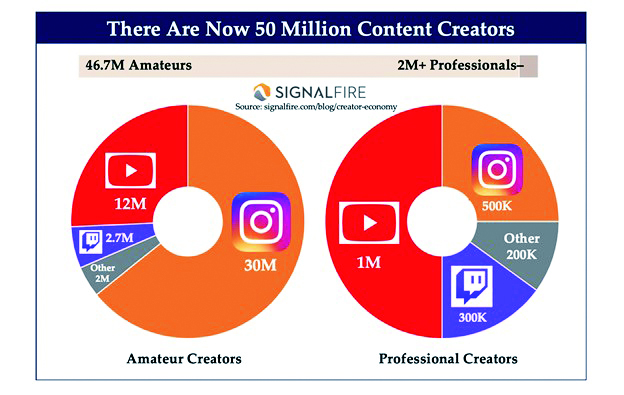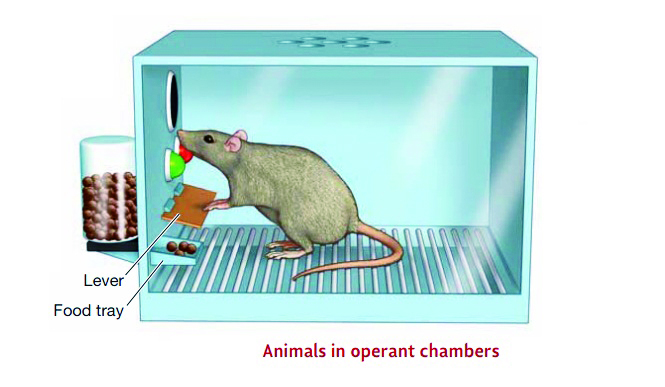READ ALSO: 10th Man View of National Security (Part-2)
Technology of Behaviour and Success Models
Technology dominance is a misleading term! Some of the most impactful innovations of our time are not ‘technological,’ they are ‘psychological,’ crafted by psy-chologists/ behaviorists of Silicon Valley labs!
Ideas after experimenting successfully on rats and pigeons are offered to the social media animals (a bit higher class of species), to confirm their validity/effectiveness. Then our responses are monitored/ recorded in real-time so that improvements/ enhancements can be made for better ‘conditioning’ in the future release! It’s an endless loop of behavior modification, and there is no way to turn it off!
If these visuals sound unusual and uncomfortable, then we need to look at what one of the most radical behaviorists of the 20th century, B.F. Skinner was doing with his ‘Skinner Box’ in the middle of World War II.
Skinner and a ‘crackpot’ Idea
One fine day, an American psychologist received funding from the U.S. Military to implement his ‘crackpot idea’ (as he referred to it) to set up the Project Pigeon, a proposal to use living organisms (pigeons in this case) to guide missiles.
Two of his programs, a research program during World War II called “Project Pigeon” and a peacetime continuation of that program called “ORCON” (short form for Organic Control), obtained sponsorship from U.S. Naval Research Laboratory. While working on the project, he realized the power of ‘behavior shaping’ methods, which in simple words means rewarding an animal for a desired behavior/response and punishing him for doing the opposite.
Shortly, Project Pigeon got suspended, but the idea was captured and implemented in developing the electronic guided systems! Encouraged by the response to his crazy ideas, Skinner continued his experiments to test his ‘ideas of behavior shaping’ on rats, pigeons, and other testable animals and developed a doctrine called ‘Technology of Behavior,’ which is also known as a technology of behavior modification.

Skinner box and the idea of ‘Conditioning’
“Almost all major problems involve human behavior, and they cannot be solved by physical and biological technology alone. What is needed is a technology of human behavior.” (B.F. Skinner, Beyond Freedom and Dignity, 1971)
In Skinner Box – a soundproof enclosure with a food dispenser, that a rat can operate by pressing a lever or a pigeon by pecking a key, Skinner used to experiment with the animal’s behavior through ‘contingencies of reinforcement’ – circumstances under which desired behavior is rewarded to make sure it will be repeated.
The behavior he demanded from those pigeons/ rats was weird and unnatural for them, such as he used to make them walk by making figure eight, by rewarding them with food at some moments. And the process, as explained by Skinner, goes like this: “I watch a hungry pigeon carefully. When he makes a slight clockwise turn he’s instantly rewarded for it. After he eats, he immediately tries it again. Then I wait for more of a turn and reinforce again. Within two or three minutes, I can get any pigeon to make a full circle.” Through this process, what he called operant ‘conditioning’ or technology of ‘behavior,’ he taught pigeons to dance and to play Ping Pong too. And one of his partners in those experiments got so excited that he left his full-time psychology career and started a commercial behavior business for animals!
One of the key discoveries from those experiments, in Skinner’s view, was the ‘schedule of reinforcements/rewards,’ and based on that, he devised different ways of delivering rewards, as per the response rate of animals(pigeons/ rats). He insisted that “a procedure in which behavior is reinforced or rewarded after scheduled but unpredictable time durations yields the most stable rate of response,” which in simple words means that if an animal knows he will get some rewards for his particular behavior but the timing for that is not fixed, it is unpredictable, then he can be tempted to do more, as long as the person who controls the box and lever of rewards wants! This is how all gambling/ casino system works and they are highly addictive too.
If it can work for rats or pigeons then why can’t it work on humans too, with this fantasy in his mind, he invented several other devices too, i.e. a cumulative recorder, an air crib for training infants, a teaching machine to automate the task programmed learning, and a verbal summator, etc. It is said that he went to an extent of performing those experiments on his kids!
Skinner aspired to build such a Skinner box for the whole of humanity, where people’s behavior can be shaped and controlled by a few and chosen people of the world! But who are those few people in his views? It’s a question that he never bothered to answer! Later, Skinner wrote a sci-fi novel called “Weldon Two” (1948) where he visualized a perfectly socially engineered society, working as per his principles of operant conditioning!
“I’ve had only one idea in my life…to put it as bluntly as possible – it is the idea of having my own way, the control of human behavior…I remember the rage I used to feel when a prediction went awry. I could have shouted at the subjects of my experiments, Behave, damn you! Behave as you ought!”
– B.F. Skinner’s novel Walden Two, 1948 (the dialogue is from a character in the novel, who is also an alter ego of the author).
It is interesting that this radical behaviorist who denied the idea of ‘free-will’ and independent thinking (he used to call them illusion), propagated the thesis of ‘conditioning’ human actions like those of rats and pigeons, and formulated devices of social engineering- is the Man behind the ‘User Experience’ of the world’s first computer network and the first social media platform (PLATO system) too!
As Skinner mentioned in his paper ‘Pigeons in a Pelican,’- “One virtue in crackpot ideas is that they breed rapidly and their progeny show extraordinary mutations.”
In typical western hypocrisy, B.F. Skinner emerged as one of the most ridiculed as well as most acclaimed behaviorists of his time! It seems that his ideas were criticized in public but implemented in private, particularly in all the Tech innovations of the post-war phase! And interestingly, to see whether Skinner was successful in his experiments or not, one needs to simply look around, Skinner box is already in action!
How dopamine-driven social platforms work and how they exploit the vulnerability of human behavioral aspects is now an open fact! But that does not stop people from indulging in them! After all, a pigeon inside the Skinner box has no ‘liberty’ to choose, other than constantly pecking, either for reward or to avoid punishments! Look at the state of User Experience today, terms like ‘User Friendly,’ ‘Customer Focused,’ or YES/NO buttons are obsolete ideas in the world of auto-play, auto-correct, auto-post, auto-feed, auto-update, and auto ‘Everything,’ people are denied even fraction of seconds to decide what they want to see/ hear or read, it’s like feeding whatever the box owner wants!
The business model of these ‘psychological’ cum tech innovations is based on three key things: Rewards – Like/share/re-tweets/followers/impressions/branding and other symbolic items with some real monetary benefits too, Punishments – shadow ban, complete ban, downgrading, false ratings, suspension, follower reduction, de-branding, etc., and Feedback-Monitoring response/ movements in real-time and customizing settings accordingly, everything which tech corporations sum up in one word ‘Engagement,’ and these are the similar kind of components on which Skinner’s Technology of Behavior was weaved around!
Within a few years of his research, Skinner’s box launched in a new avatar – the ‘World Wide Web,’ and the rest is history!
Today, India is the most online country in the world, an average Indian spends approx 6.36 hours a day online, which is close to a full day work shift! Now the question that we need to ask is how long can we afford to watch our people and societies being ‘conditioned’ by some devoted disciples of Skinner, sitting in Silicon Valley, Harvard, or at the campus of the American Psychological Association?
It is important here to note that all these experiments were going in parallel to the efforts of developing the “Information Warfare” doctrine by the US Military establishment, and their main theme was to ‘Target’ and ‘attack’ the Will of the enemy or enemy nation! So if in Skinner’s argument, ‘Free-Will’ is nothing but an illusion, then what US military was planning to attack? And why do they invest so heavily in subverting/ conquering something which does not exist?
‘Success Models’ – A Serious Business
“War belongs not to the province of Arts and Sciences…it would be better instead of comparing it with any Art, to liken it to business competition, which is also a conflict of human interests and activities;” Karl von Clausewitz
Developing, promoting, and nurturing ‘Success Models’ is a serious business for the powerful nations of the world!
Think about this, what would be the response of those rats/pigeons, which were not inside the ‘box’ but were watching their community members earning some easy ‘rewards’ (food in that case) only by displaying a particular kind of behavior, repeatedly! For them, the whole process occurs as nothing but a Success Model, a path to sure Success!
To explore the idea of Success Models, let’s take an example from our colonial past!
Colonial Past – with whom we fought?
Today, Bharat is on a mission to free itself from all the symbols of the colonial past! The historic images of Netaji’s Statue getting its deserved place at India Gate filled the hearts of all Bhartiya with immense pride and honor!
But this is a moment to take a pause and introspect too. Through different creative improvisations, we are often reminded that we fought with the British for our freedom and dignity. But those visuals sometimes haunt us! A mighty and ancient civilization like Bharat (and an economic superpower of that time too) fought with a bunch of British invaders, for over 200 years, this is not an easy-to-grasp fact! So the question comes, with whom we fought?
There are many dimensions to view our ‘Freedom Struggle’ with the British and all of them have their relevance in different contexts. But what makes us wonder is that- how after the first war of Independence in 1857, which started with a straight mission and slogan ‘Maro Feringhee ko,’ our fight for Independence streatched for another 100 years? Why it took us so long to reclaim our freedom and dignity back?
We fought not with the British but with their Success Models!
Some economic/ political Success Models were created, nurtured and promoted by British in our land, that initially appealed to our people, and they started participating in them, for different interests, a majority of which were not economical alone, but behavioral/psychological too. Through some rewards, some gains, and some benefits, our people were ‘conditioned’ to an extent that living under the instructions of foreign masters was more attractive, rewarding and convenient to them than old days of local rulers! The loyalty to British was more rew
“Oh Martyrs…say that the only cause of the defeat of Hindusthan was Hindusthan herself, that shaking away the slumber of centuries, the mother rose to hit the foe, but while her right hand was striking the Feringhee dead, her left hand struck, alas, not the enemy, but her forehead! So she staggered and fell back into the inevitable swoon of 50 years.”
(‘Letters from Andaman’ Veer Savarkar, while recalling the martyrs of 1857–
First War of Independence)
READ ALSO: 10th Man View of National Security (Part-2)


















